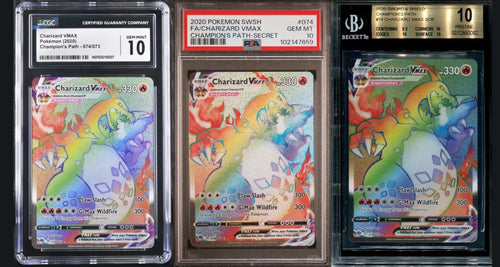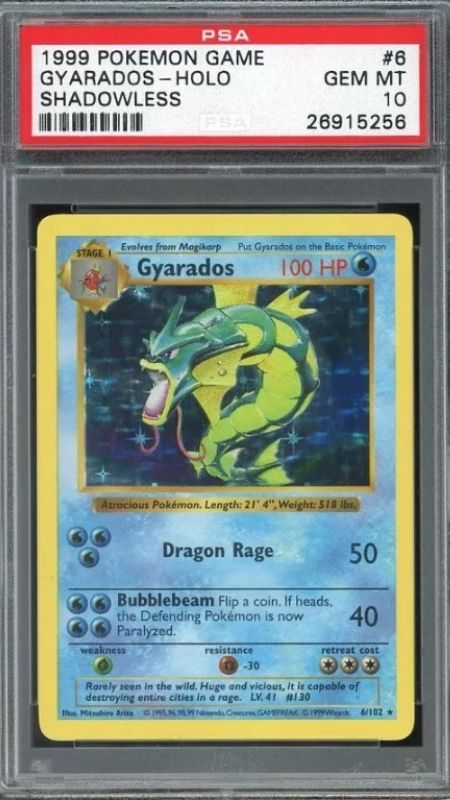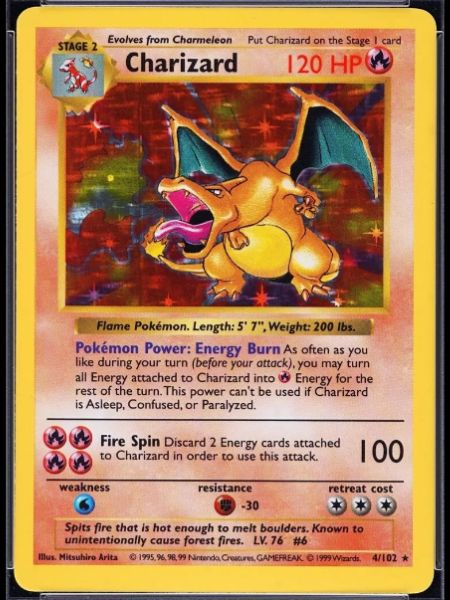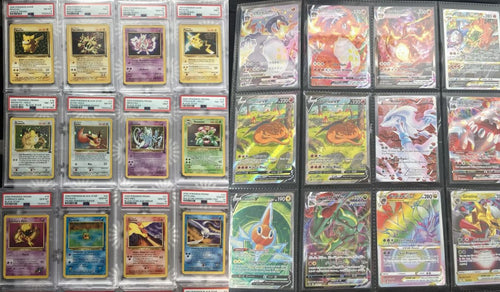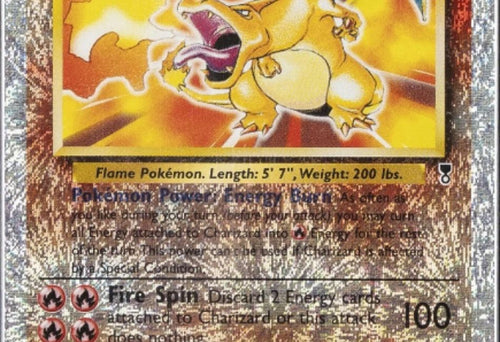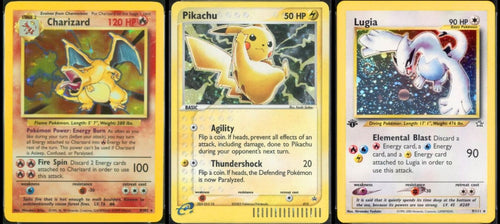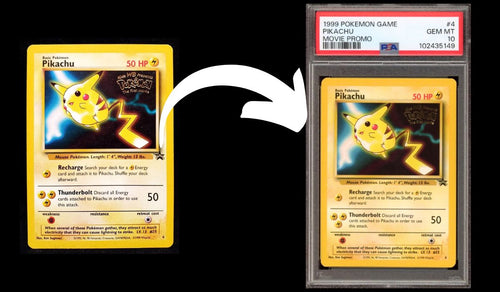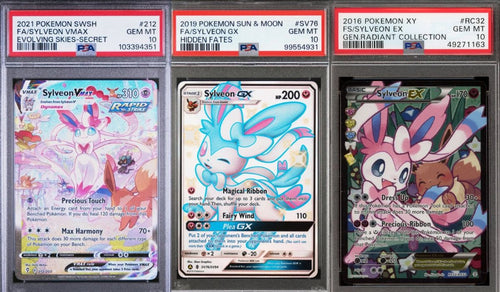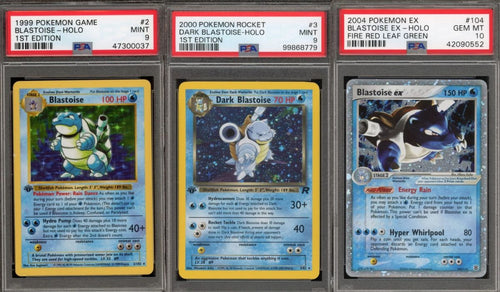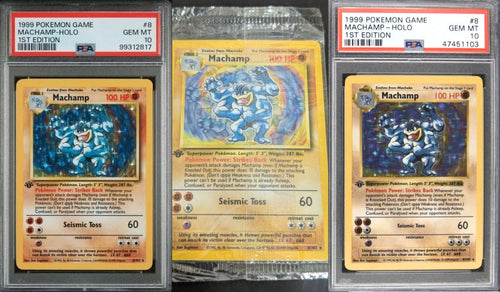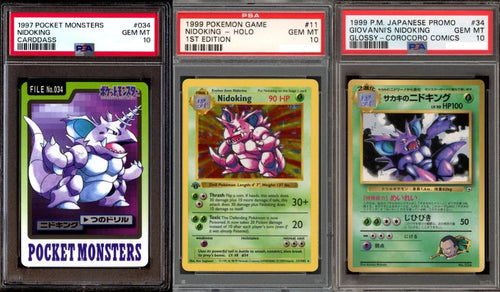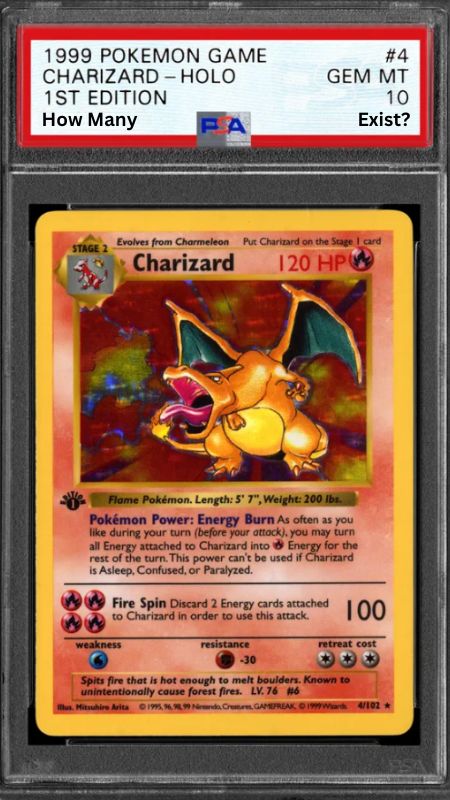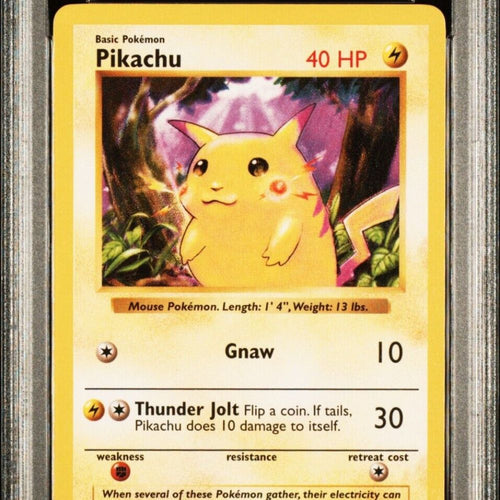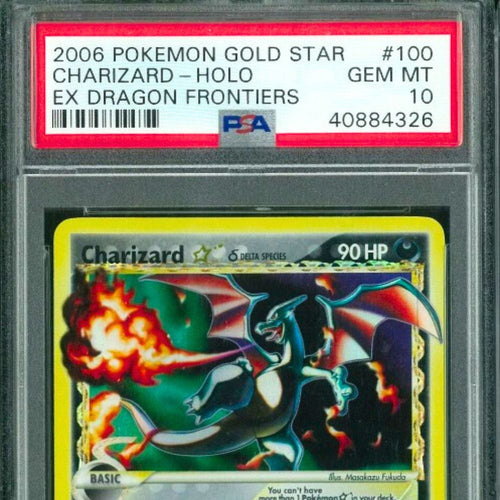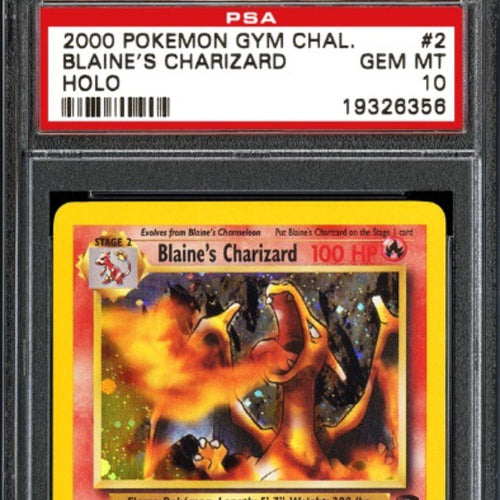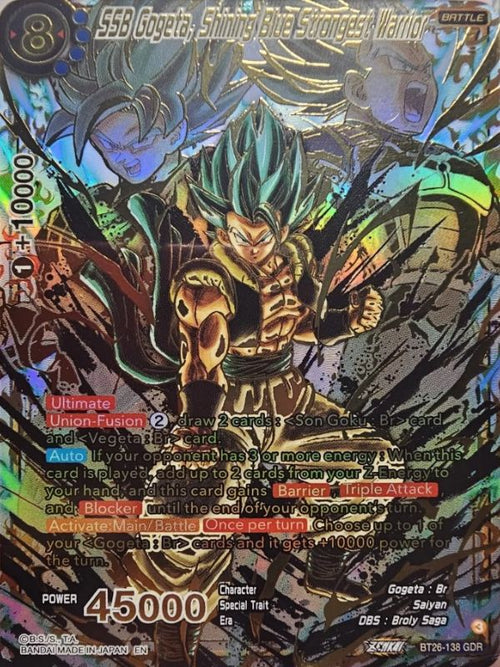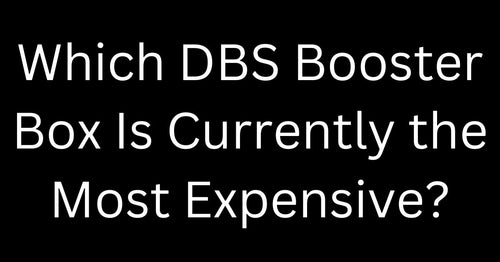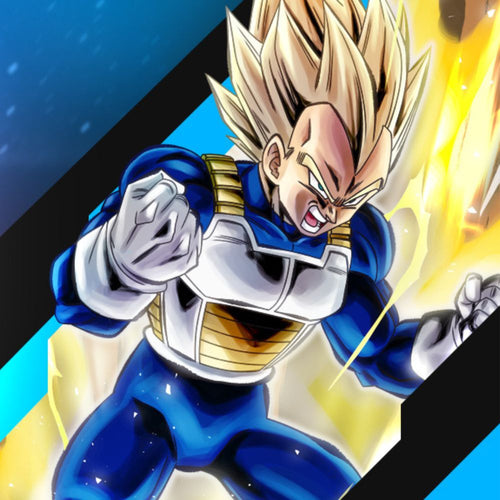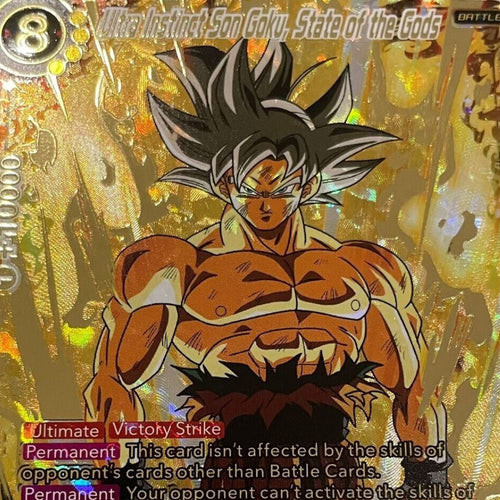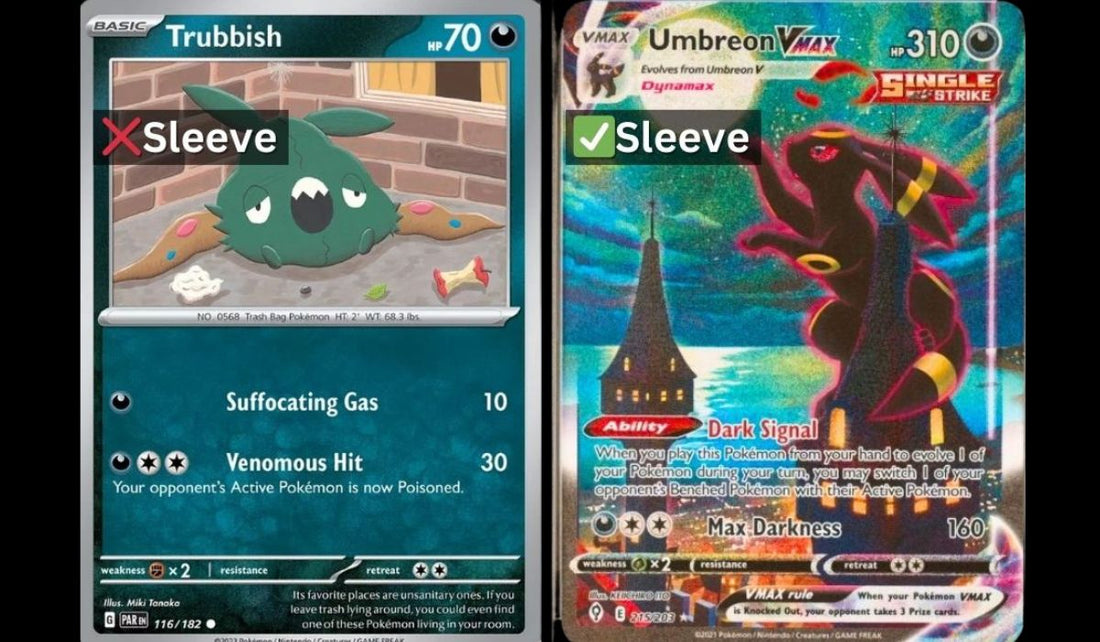
What Pokemon Cards Should You Sleeve? (Beginner’s Guide with Examples)
Share
What Pokemon Cards Should You Sleeve? (Beginner’s Guide with Examples)
New to collecting Pokemon cards and wondering if you really need to sleeve them all? You’re not alone. Whether you just opened a fresh booster pack or found your old childhood binder, knowing what to sleeve (and what doesn’t need it) is key to preserving value and condition.
In this guide, we’ll break down exactly what Pokemon cards you should sleeve, why it’s important, and the best types of sleeves to use—so you can protect your collection like a pro.

Not every card needs protection—but the right ones definitely do.
Why Sleeving Your Pokemon Cards Matters
- Prevents edge wear, scratching, and whitening
- Protects against humidity, fingerprints, and dust
- Preserves condition for grading and long-term storage
- Helps maintain value for resale or investment
Pokemon Cards You Should Definitely Sleeve
1. Holofoils and Reverse Holos
These cards have shiny or reflective surfaces that are highly prone to scratching and scuffing. Whether vintage or modern, holo cards should always be sleeved immediately after pulling or purchasing.

A classic holo (Base Set Mewtwo) and a reverse holo (Evolutions Mewtwo). Both should be sleeved to avoid scratches and edge wear.
2. Ultra Rares, Secret Rares, Full Arts, and Alternate Arts
Cards with high rarity and demand—like Full Art Charizards, Rainbow Rares, or Alt Arts like Umbreon VMAX—are valuable and often targeted by collectors and investors. Always sleeve these to preserve condition.

Two stunning examples of ultra rare cards: the Latias & Latios GX Alternate Art and the Shiny Charizard V Secret Rare. These high-value cards are prime candidates for sleeving to protect against scratches and wear.
3. Vintage Cards (WOTC Era)
Any cards from Base Set, Jungle, Fossil, or Neo series—especially 1st Edition or Shadowless—should be sleeved and stored carefully. Even if they’re not in mint condition, they still hold long-term value. Some WOTC-era commons are also worth money in good condition.

Two classic WOTC-era cards: Snorlax from Jungle and Blastoise from Base Set, both 1st Edition. Vintage cards like these should always be sleeved to preserve long-term value.
4. Cards You Might Grade
If you’re thinking about sending cards to PSA, CGC, or BGS, they must stay in top condition. As a general rule, sleeve anything that has solid centering and no whitening or print flaws.

Cards like Charizard VMAX and Umbreon V are commonly graded due to their popularity and strong PSA 10 value. If your copy has great centering and no whitening or print flaws, sleeving it is the first step toward grading.
5. Signed or Error Cards
Autographed cards and factory errors (like miscuts or ink shifts) are rare and often one-of-a-kind. Sleeve these for both protection and value retention.

Signed and error cards like these are truly unique. Whether it’s an artist autograph or a factory miscut, sleeving these cards is essential to preserve their collector value and rarity.
Cards You Don’t Necessarily Need to Sleeve
- Bulk commons/uncommons from recent sets
- Damaged or heavily played cards (unless sentimental or vintage)
- Cards worth under $0.20 unless used for trade or play
Tip: If you’re unsure whether a card is worth sleeving, it’s better to be safe than sorry—just sleeve it.
Best Sleeves for Pokemon Cards
- Penny Sleeves: Cheap and essential for bulk or grading prep (Ultra Pro recommended)
- Perfect Fit Sleeves: Ideal for double-sleeving or tight storage
- Toploaders: Great for shipping or high-value cards
- Binder Pages: Best for long-term display and organization

A vintage Alakazam card sleeved and stored in a top loader — a solid option for protecting rare or valuable cards during storage or shipping.
FAQs
Should I sleeve every card I pull from a pack?
Only sleeve the ones that are rare, valuable, or in near-mint/mint condition. Bulk cards can go in binders or boxes.
Can I sleeve cards before grading them?
Yes. Place them in a penny sleeve first, then into a Card Saver or semi-rigid holder. This is the preferred method for PSA submissions.
What’s the best way to store sleeved cards?
Store upright in a card box, binder, or graded card case. Keep them in a cool, dry environment to avoid warping or humidity damage.
Closing Thoughts
Sleeving your Pokemon cards is one of the easiest and most effective ways to protect your collection. Whether you're collecting for fun or investing for the future, taking a few extra seconds to sleeve the right cards will go a long way in maintaining their condition and value.
Thinking about grading your cards? Learn when it’s actually worth it in our full guide: Should You Grade Your Pokemon Cards?

